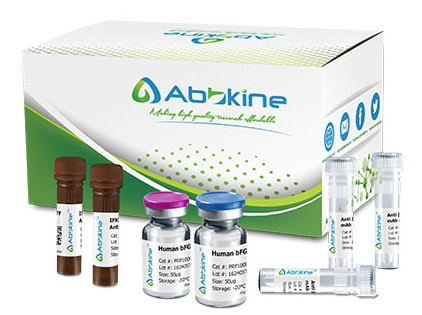Using differential display RT-PCR, followed by 5-prime and 3-prime RACE, Staege et al. (2001) isolated a cDNA encoding TNIP3, which they called LIND, that was upregulated in monocytes infected with Listeria monocytogenes.The predicted 325-amino acid protein contains 3 coiled-coil domains and is most likely localized to the nucleus. The authors identified potential splice sites that would result in variants with different C termini. Northern blot analysis detected 1.7- and 2.4-kb transcripts in Listeria-infected monocytes, but not in uninfected controls. RT-PCR analysis showed highest expression in lung, lymph node, thymus, and fetal liver, with lower levels in brain, spleen, leukocytes, and tonsils. Northern blot analysis of multiple tissues showed no expression.
Human TNFAIP3-interacting protein 3 (TNIP3) ELISA Kit employs a two-site sandwich ELISA to quantitate TNIP3 in samples. An antibody specific for TNIP3 has been pre-coated onto a microplate. Standards and samples are pipetted into the wells and anyTNIP3 present is bound by the immobilized antibody. After removing any unbound substances, a biotin-conjugated antibody specific for TNIP3 is added to the wells. After washing, Streptavidin conjugated Horseradish Peroxidase (HRP) is added to the wells. Following a wash to remove any unbound avidin-enzyme reagent, a substrate solution is added to the wells and color develops in proportion to the amount of TNIP3 bound in the initial step. The color development is stopped and the intensity of the color is measured.
Human TNFAIP3-interacting protein 3 (TNIP3) ELISA Kit listed herein is for research use only and is not intended for use in human or clinical diagnosis. Suggested applications of our products are not recommendations to use our products in violation of any patent or as a license. We cannot be responsible for patent infringements or other violations that may occur with the use of this product.
bio-equip.cn




